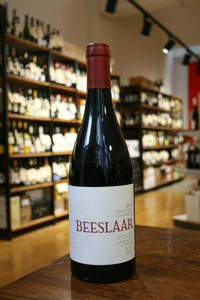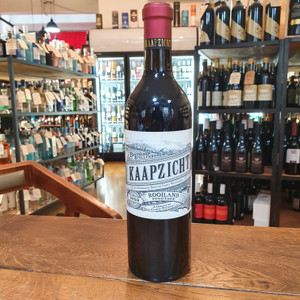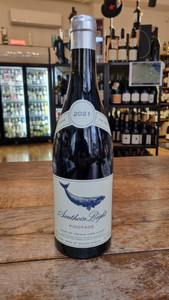
"Cahn's pinotage is a unique wine made especially for Martin Cahnbley (the "Cahn") in New Zealand. 2019 was the first time this has been done and the photo was taken by Martin on one of his many trips to Cape Town. It was taken in Hout Bay looking up through the spaces between two umbrellas. It is a strong photo with a personal connection for Martin yet appears abstract enough to draw the viewer in for a closer look. We love the photo as it has 2 distinct lines that run through the picture and create mystery. The grape used in the wine is Pinotage which can be seen as a “Black Sheep” wine in the wine industry, but Martin tasted one particular barrel that he really enjoyed so we decided to bottle it for him, we are very glad we did!
What we love about this block is that it produces very balanced purple fruited wines, and once the wine has finished fermentation the acid doesn’t fall out (like it does in a lot of pinotage blocks) but it retains its relatively low (for Pinotage) pH and fruit structure."
Testalonga
Pinotage
Swartland
Traditionally a grain-producing area, in summer the Swartland district is marked by green pockets of vineyards clambering up the foothills of the mountains (Piketberg, Porterville, Riebeek and Perdeberg) and along the banks of the Berg River. In the past, the region was planted mainly to bushvines but trellising is increasingly being adopted due to advances in management strategies and quality considerations.
The Swartland literally translated means ‘the black land’ and the area takes its name from the now endangered indigenous renosterbos (rhino bush) which once turned the landscape a dark colour at certain times of the year. The district was traditionally a source of robust, full-bodied red wines and high quality, fortified wines. The Swartland Independent Producers (SIP) is a coming together of a group of like-minded producers working to express a true sense of place in the wines of the Swartland.
In recent times, some exciting award-winning wines have emerged, both red and white, and the area continues to produce top port-style wines. Increasing percentages of Pinotage, Shiraz and Cabernet Sauvignon are being grown here, as well as Chardonnay, Chenin Blanc and Sauvignon Blanc. It has five designated wards: Malmesbury, Paardeberg, Paardeberg-South, Riebeekberg and Riebeeksrivier. The district of Swartland borders Piketberg to the north, which is not dissimilar in both geography and climate.







